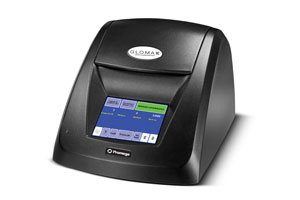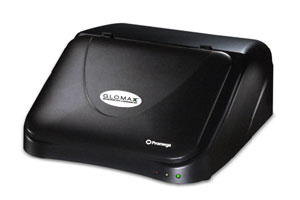Gaussia荧光素酶相关文献1--Codon-Optimized Gaussia Luciferase cDNA for Mammalian Gene Expression in Culture and in Vivo
已下载3358次 / 原平皓生物
简介:
Codon-Optimized Gaussia Luciferase cDNA for Mammalian Gene Expression in Culture and in Vivo
Bakhos A. Tannous,1,2,* Dong-Eog Kim,1 Juliet L. Fernandez
Photoproteins have played a major role in advancing our understanding of biological processes. A broader array of biocompatible, nontoxic, and novel reporters can serve to expand this potential. Here we describe the properties of a luciferase from the copepod marine organism Gaussia princeps. It is a monomeric protein composed of 185 aa (19.9 kDa) with a short coding sequence (555 bp) making it suitable for viral vectors. The humanized form of Gaussia luciferase (hGLuc) was efficiently expressed in mammalian cells following delivery by HSV-1 amplicon vectors. It was found to be nontoxic and naturally secreted, with flash bioluminescence characteristics similar to those of other coelenterazine luciferases. hGLuc generated over 1000-fold higher bioluminescent signal intensity from live cells together with their immediate environment and over 100-fold higher intensity from viable cells alone (not including secreted luciferase) or cell lysates, compared to humanized forms of firefly (hFLuc) and Renilla (hRLuc) luciferases expressed under similar conditions. Furthermore, hGLuc showed 200-fold higher signal intensity than hRLuc and intensity comparable to that of hFLuc in vivo under standard imaging conditions. Gaussia luciferase provides a sensitive means of imaging gene delivery and other events in living cells in culture and in vivo, with a unique combination of features including high signal intensity, secretion, and ATP independence, thus being able to report from the cells and their environment in real time.
Bakhos A. Tannous,1,2,* Dong-Eog Kim,1 Juliet L. Fernandez
Photoproteins have played a major role in advancing our understanding of biological processes. A broader array of biocompatible, nontoxic, and novel reporters can serve to expand this potential. Here we describe the properties of a luciferase from the copepod marine organism Gaussia princeps. It is a monomeric protein composed of 185 aa (19.9 kDa) with a short coding sequence (555 bp) making it suitable for viral vectors. The humanized form of Gaussia luciferase (hGLuc) was efficiently expressed in mammalian cells following delivery by HSV-1 amplicon vectors. It was found to be nontoxic and naturally secreted, with flash bioluminescence characteristics similar to those of other coelenterazine luciferases. hGLuc generated over 1000-fold higher bioluminescent signal intensity from live cells together with their immediate environment and over 100-fold higher intensity from viable cells alone (not including secreted luciferase) or cell lysates, compared to humanized forms of firefly (hFLuc) and Renilla (hRLuc) luciferases expressed under similar conditions. Furthermore, hGLuc showed 200-fold higher signal intensity than hRLuc and intensity comparable to that of hFLuc in vivo under standard imaging conditions. Gaussia luciferase provides a sensitive means of imaging gene delivery and other events in living cells in culture and in vivo, with a unique combination of features including high signal intensity, secretion, and ATP independence, thus being able to report from the cells and their environment in real time.


